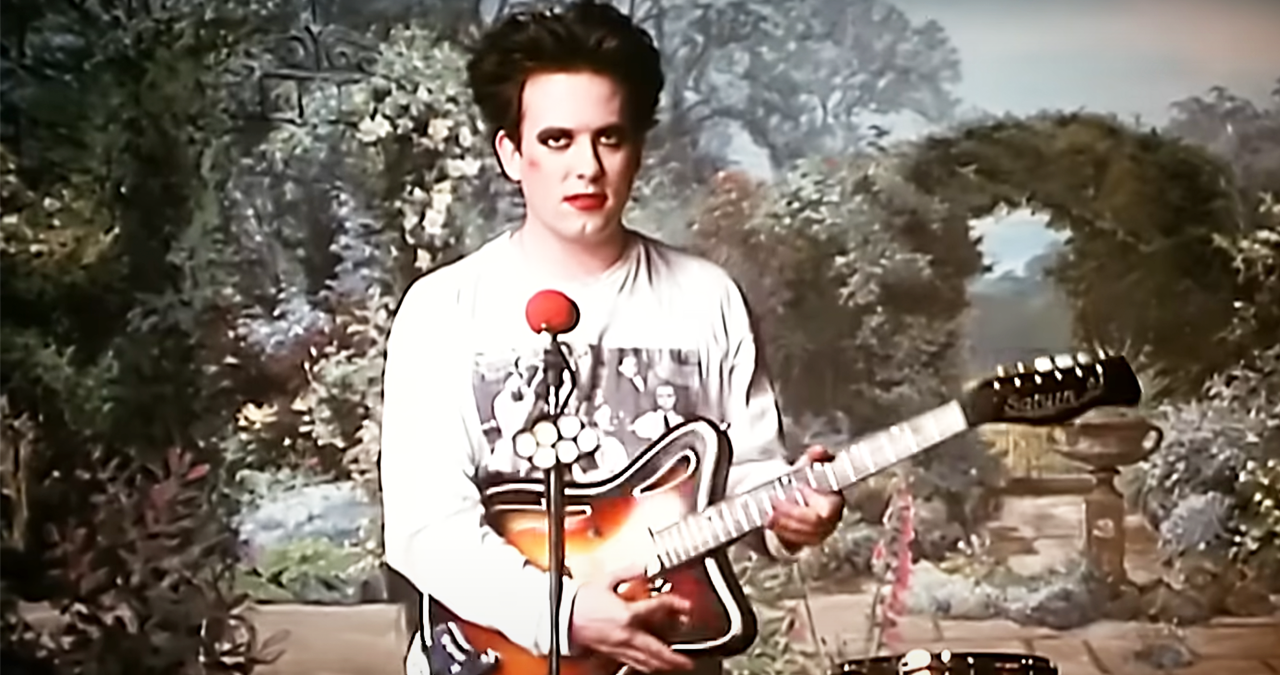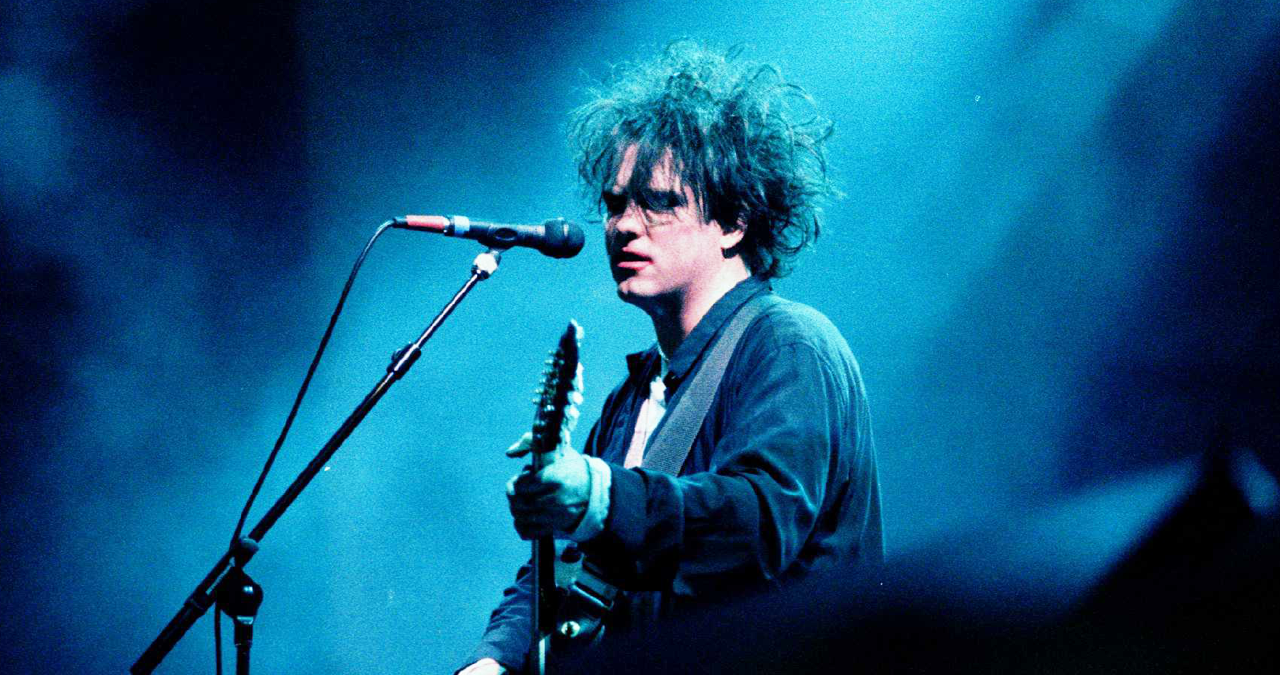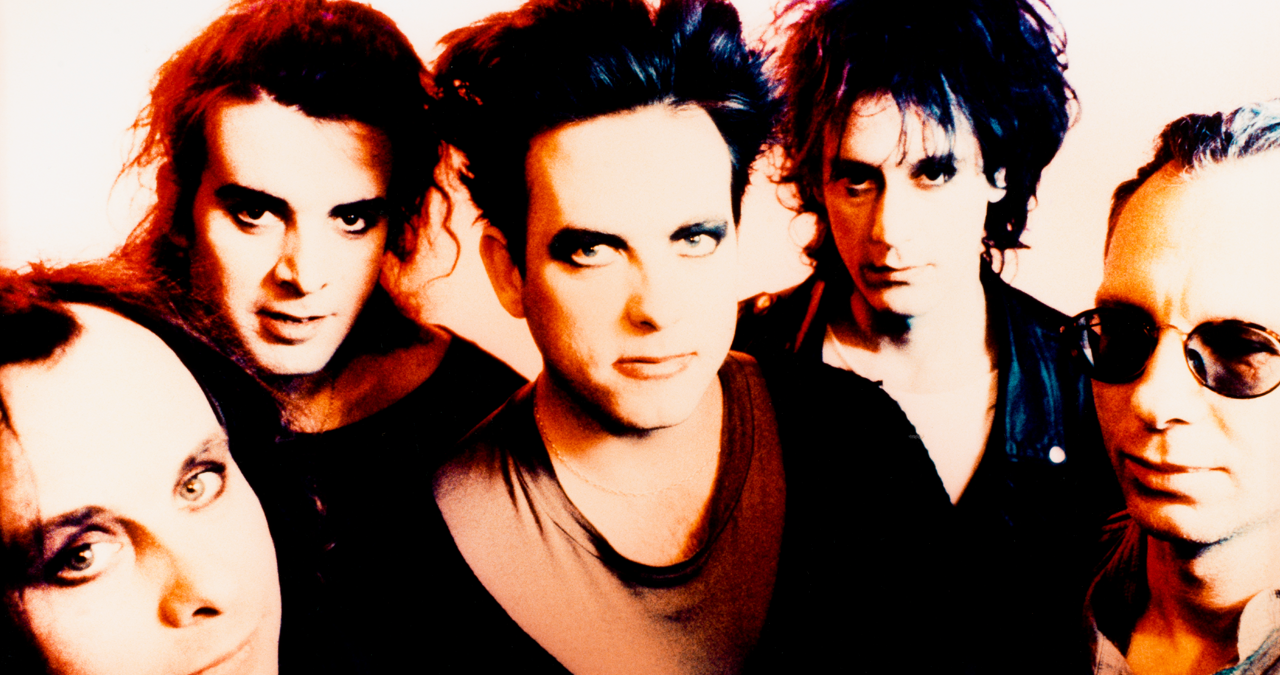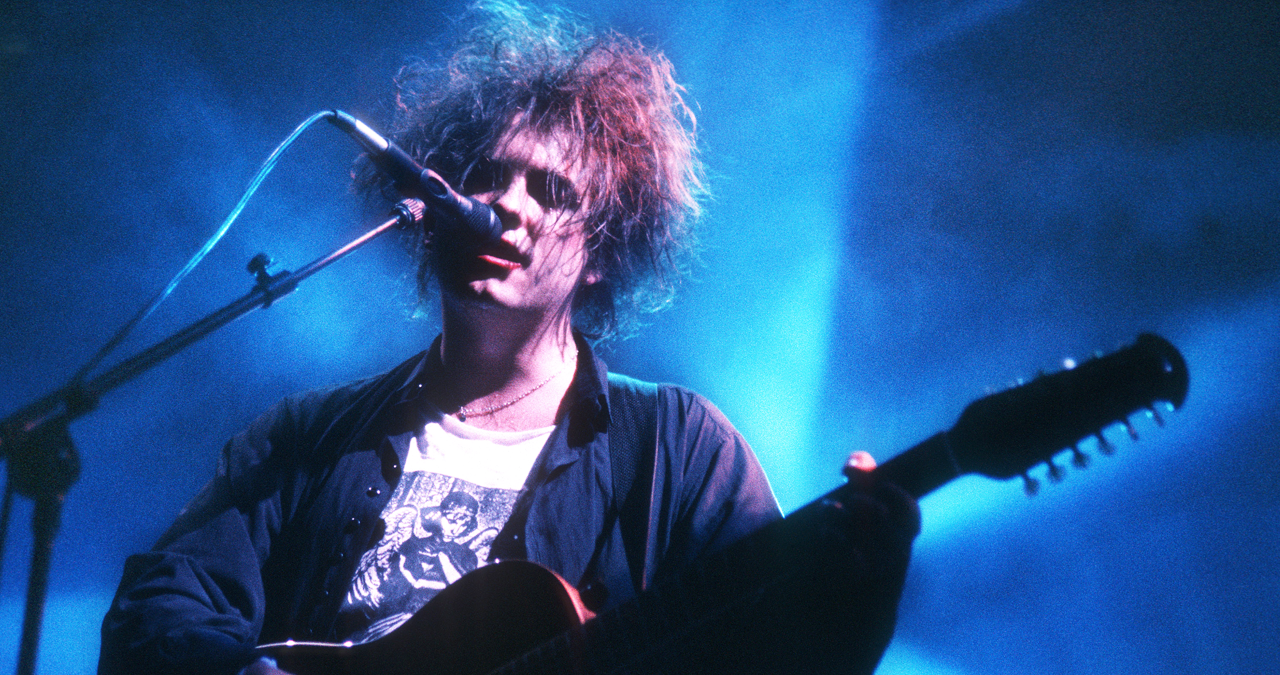“It's a really good chord progression, I couldn't believe no-one else had used it”: How the Cure sidestepped the gloom and wrote one of the most uplifting songs ever recorded
The Cure’s life-affirming indie pop classic remains the ultimate Friday tune

If we asked you the question, which ‘happy’ song genuinely makes you feel uplifted, what springs to mind? Perhaps something timeless, like Lovely Day by Bill Withers, or a selection from the expansive, joyous oeuvre of Stevie Wonder. Or, maybe something by ABBA is more to your taste…
We’d have you for hours, we assume, before you’d point toward goth’s arch-figureheads, the Cure, as go-to smile-inducers.
But, for our money, it's the Cure’s euphoric 1992 single, Friday I’m in Love which reigns triumphant. Magically bottling a near-tangible feeling that few artists have come close to touching.
It's the life-affirming promise of the weekend, buoyed by the ecstatic kaleidoscope of fresh emotions released in the wake of falling in love.
You could trust the sentiment, too. Unlike other pop songwriters, Robert Smith’s version of a ‘hymn to the weekend’ was characteristically more hued, more self-aware and conscious of the struggle it often takes people to actually feel positive (particularly Cure fans…)
That insight is there in its lyric, and its spirit. The aural version of a light shard striking out of the densest cloud, this underlying truthfulness is part of the reason why it's one of the most compelling, and genuinely 'happy' songs in the pop canon.
To put it another way, it's because the Cure were so habitually rooted in the darkness that the brightness of Friday I’m in Love radiates so strongly.
Attempting to emerge from the shadow of 1989's sprawling eighth album, Disintegration, the band, fronted by Robert Smith, were hoping they could jump back on the more universal rails they’d once ridden during their mid-eighties commercial peak, during the The Head on the Door-era.
Want all the hottest music and gear news, reviews, deals, features and more, direct to your inbox? Sign up here.
That album, which had featured perennial radio hits In Between Days and Close to Me had marked a heavier swing towards widespread acceptance whereas the sprawling Disintegration found the Crawley five-piece lurching downward on a progressive expedition into a dense underworld of sound.
Long arrangements, ominous atmospheres and the weight of existential anguish defined the record.
Though, Disintegration was quite brilliant, and fawned over by fans and critics, Smith wanted to tunnel upwards, out from the gloom and once again tap at the well of the Cure's broader, populist potential.
And so it was, that Wish - Disintegration’s follow-up - found a space to operate somewhere within the gulf between the extremes.

Recorded at Richard Branson’s Oxfordshire’s The Manor Studio with stalwart producer David M. Allen at the helm, the Cure brewed material that fluctuated between the light and the dark.
There was the archetypal shadow-dwelling of tense opener Open, melancholic ballad Apart, and a sense of gnawing longing on the driving From the Edge of the Deep Green Sea.
But also, the Cure re-awakened their lighter, exhilarating side. It could be detected in the ridiculous Doing the Unstuck and in the purity of future Cure classic, A Letter to Elise.
All of Wish’s cuts, however, would be dwarfed by a song that was unlike anything the Cure had penned before or since.
Though a vast swathe of the band’s material at this point was spawned from lengthly bass and drum jams between Simon Gallup (bass) and Boris Williams (drums), the foundation of Friday I’m in Love sprang into the mind of Robert Smith spontaneously.
“I remember driving home one Friday afternoon to have the weekend off,” Smith told Guitar World. “And I started to think of this really great chord sequence. I was about 20 minutes away from the studio. So I turned around, went back to the studio and everyone was still there. We actually recorded it that Friday night.”
Smith’s new idea was propelled by a springy back-and-forth chord progression, and the band soon snapped into order. The vigorous new demo was dubbed ‘Friday' in tribute to the night it was hastily committed to tape.
This working title triggered something else in Smith, a wide-appeal lyric that reached beyond the confines of the Cure's usual audience. It would feed into a universal experience that any listener who'd ever been bored, watching the clock at work, had ever felt.
That shared appetite for the freedom of the weekend most had experienced on a Friday afternoon seemed like a solid route to provoke recognition in the hearts of millions…
“When I came to do the words for it, I thought, why don't I do a song about that Friday feeling? It's a thing you have at school, and lots of people work at jobs they don't really enjoy. So that Friday afternoon feeling is something you look forward to,” Smith told Guitar World.
Though optimistic-sounding, the original arrangement was a touch slower, and more firmly rooted in they key of D.
Smith struggled with matching the intrinsic cheerfulness of the progression with a lyric that encapsulated the 'Friday feeling', yet still retained the authenticity of the Cure’s creative voice.
“Genuinely dumb pop lyrics are much more difficult to write than my usual outpourings through the heart,” Robert told Spin Magazine. “I went through hundreds of sheets of paper, trying to get words for [Friday I’m in Love]. You have to hit something that's not cringe - a simplicity and naiveté that communicates. There's a dumbness that sort of cracks. We've always done pop songs. It's just sometimes they're way too down, sort of desperate.”

Poring over several lyrical ideas, Smith reached deep and channelled both light and shade.
With a nod to the traditional folk nursery rhyme Monday’s Child via its weekday-listing construction, Smith penned a lyric that underlined how darkness, depression, isolation (and many other staple Cure themes) all paled next to the overwhelming weight of being genuinely in love.
“I don't care if Monday's blue
Tuesday's grey and Wednesday too
Thursday, I don't care about you
It's Friday, I'm in love
Monday you can fall apart
Tuesday, Wednesday break my heart
Oh, Thursday doesn't even start
It's Friday, I'm in love”
Smith’s lyrics proceeded in this fashion, counterbalancing the misery suffered during the rest of the week (which escalated to an actual heart attack on the Wednesday of the second verse!) with the radiance of Friday’s promise of devotion.
The second section - which operates in the place where a chorus typically should be - punctuates the verse’s week-structured lyric with a reference to the weekend itself, and perhaps a typically Cure-like allusion that the relationship in question was doomed to not go beyond the giddy euphoria of that Friday night;
“Saturday, wait
And Sunday always comes too late
But Friday, never hesitate”
The message sounds clearly. Though the past (the week) and the future (the weekend), might prove dire (cataclysmic even…), you should embrace this perfect, Friday moment. Let your hair down, live in the now.
With the backing track already in the can, Smith begun to worry about the underlying verse chord progression.
Rolling brightly from D to G, then D to A, before an emotional pivot to B minor, the key reasserted itself by clambering back to G, then jogged between D and a final A to frame Smith’s central ‘It’s Friday I’m in love’ motif. It felt so right, it couldn’t have been any other way.
It was just perfect. Perhaps too perfect.
Robert began to suspect that the smooth flow of the progression must have been subconsciously lifted from elsewhere.
“It's a really good chord progression, I couldn't believe no-one else had used it and I asked so many people at the time (I was getting drug paranoia anyway) ‘I must have stolen this from somewhere, I can't possibly have come up with this.' I asked everyone I knew, everyone. I'd phone people up and sing it and go, 'Have you heard this before? What's it called?' They'd go, 'No, no, I've never heard it.’” Smith told Guitar World.

Though the song was already quite unlike anything else currently on the slate for Wish, producer Dave M Allen and Robert Smith though there could be an even more thrilling version to be found by scaling through the speed and pitch of the recording.
The pair tried out several variations with the song's pitch adjusted using the variable speed pitch control on the studio’s tape machine. But, not finding anything that surpassed the original sound, the two realised that maybe they should just leave it be.
However a slight hiccup left its mark on the song forever…
Thinking he’d reset the varispeed control, Smith had actually left it a quarter-tone higher in pitch. Playing it back, Smith was overjoyed at what he heard.
“That was an accident, albeit a happy one.” Robert remembered in an interview with Guitar Player. “I was playing with the pitch control and forgot to turn it off. The whole feel changed, and the fact that it’s the only song on Wish that’s not in concert pitch really lifts it out and makes it sound different. After working on the record for months, hearing something a quarter tone off makes your brain take a step backwards.”
Delighted upon stumbling upon this odd tonal variance, Smith then recorded his lead vocal to match.
Garnished by a crystalline riff which gracefully orbited the central melody of the song, Friday I’m in Love came together neatly. It was almost as if this most rapturous of songs had willed itself into being, against all the odds, through the hands of one of music’s darkest bands.
It was clearly the sweet, radio-angled single they were looking for. But, perhaps a little concerned about what the under-representative song might imply about the forthcoming album, the group put out the song High as the lead single in March 1992, a month ahead of the parent album’s release in April.
With Wish now sitting on shelves, the band knew it was time to unleash Friday I’m in Love on an unsuspecting public.
The single was backed by a fabulous, Tim Pope-directed video which captured the band at their most chaotic and child-like
Seeing the arch-misery merchants cavorting about, having an unscripted laugh, playing around with film-set props and not taking anything seriously poked a huge hole in their downbeat public perception.
'It's Friday afternoon, and we're off duty' was the apparent message.
The video's depiction of the band letting their hair down matched the song's seize-the-moment tone perfectly. It soon became an MTV staple and would go on to win the European Viewer’s Choice as the Best Music Video at the 1992 MTV Video Music Awards.
The songs breezy feel lent itself toward constant radio rotation, it soon became a permanent Friday fixture..
It rocketed up the charts in their native UK, overtaking previous single High's placement at eight and achieving number six status. Its success in the US too was much more noticeable, getting to number 18 in the US Billboard Hot 100.
Friday I'm in Love has of course, over the years only increased in stature as the Friday anthem.
It’s a clarion call to throw down your tools (or close your laptop lid), escape the drudgery, reject the misery and rush headlong into the welcoming bliss of the weekend.
Fall in love, get heartbroken. Rinse and repeat.
Though Smith has had an uncertain relationship with the song's overexposure, he’s come to appreciate how this spontaneously written ditty has transcended the more denser areas of his band’s output to become the song for which they’re perhaps best known.
“We didn’t play it live much for a long time…I thought it was too happy!” Smith said in an Wish Listening Party on Twitter in 2022. “But now, [Friday I’m in Love] has become a really wonderful moment in the show.”
The song continues to impact upon new generations, with Olivia Rodrigo performing a magnificent cover version alongside Robert Smith himself during her 2025 Glastonbury appearance.

“It’s always been paradoxical that it’s pushed down people’s throats that we’re a goth band,” Robert told Mojo in 2004, “Because, to the general public, we’re not. To taxi drivers, I’m the bloke that sings ‘Friday I’m in Love’.
@livbedumb one of the coolest moments of my life!!!! thank u glasto and thank u Robert for being the best there ever was! 🇬🇧🎸
♬ original sound - Olivia Rodrigo

I'm Andy, the Music-Making Ed here at MusicRadar. My work explores both the inner-workings of how music is made, and frequently digs into the history and development of popular music.
Previously the editor of Computer Music, my career has included editing MusicTech magazine and website and writing about music-making and listening for titles such as NME, Classic Pop, Audio Media International, Guitar.com and Uncut.
When I'm not writing about music, I'm making it. I release tracks under the name ALP.
You must confirm your public display name before commenting
Please logout and then login again, you will then be prompted to enter your display name.
